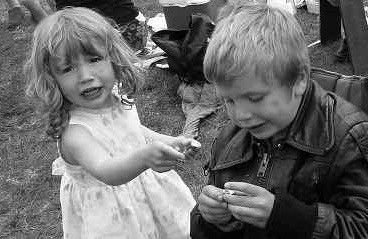
If you’re like me, it’s easy to let your kids’ lousy mood drag you down. My kids have ADHD (Hyper and Inattentive), and sometimes they get stuck in a bad attitude or irritating behavior which used to affect me negatively. Sometimes, I still get sucked in, but by nurturing positive emotions I do a much better job of keeping my good mood.
I admit changing your general mood from negative to positive takes work, but the good news is that once you’re accustomed to happiness and thankfulness it’s much easier to return to those good feelings after life throws you a curve ball. If your home life feels hopeless because your kids fight, overreact, make messes, forget, yell, etc. I know how you feel. I spent years in a negative spiral, and it only made me depressed.

”I’ll never forget the day I realized I don’t have to feel bad just because my child is doing poorly.”
I know the above statement may seem harsh and like I don’t care, but it’s actually quite the opposite. I got sucked into my kid’s moods, and being able to keep my positive emotions means I can keep a cool head, show empathy, and give my kids better help. My children struggle with ADHD and often one of them flips out after school because they’ve concentrated so hard all day they can’t hold it together any longer.
What I did to change my basic everyday mood was begin a thankfulness and daydreams journal, write a mission statement, and learn a handful of positive statements I could say out loud.
Recipe for a successful positive mood!
- First, write your life mission statement in the front of your journal. It doesn’t have to be the last mission statement you ever write. Let it reflect what you want to achieve, what you strive to be better at, and how you wish to help your family. You can always add to it in the future. Read this statement once each day preferably out loud.
- Second, make a thankfulness habit! Write 5 things that you are thankful for each night before bed. When you wake up don’t get out of bed before you’ve listed in your mind five things that you’re thankful for.
- Third, write 5-10 statements that you can learn and repeat when feel low. Some examples below.
Positive statements I use to return to a good mood
- ”I choose to believe that everything is working out for the good of my family.”
- ”I am a good mom and I always do my best.”
- ”I love my kids when they’re in a bad mood, but I don’t need to join them there.”
- ”I choose to feel good and let things go well for me all the time.”
- ”Choose to look on the bright side.”
- ”I choose to use positive interpretations for other people’s actions.”
- ”I choose to see the best in others.”
This takes work in the beginning. It took me about a year before I elevated my mood to the point that I didn’t need to think about being positive all the time. These days it’s easier to be positive on autopilot. When I get down (let’s face it we will all be sad, angry, or annoyed from time to time) it’s easier to return to the state of positivity that I am used to being in because feeling good is now part of my everyday life!
Being happy when your kids are in a bad mood is actually fun. It’s not necessary to join them in negative emotions to show empathy. When children realize they can’t rub your good feelings they either get mad and leave or join you in your happiness (This may not work for very small children, but it works for me and my kids (8, 13, and 16).

